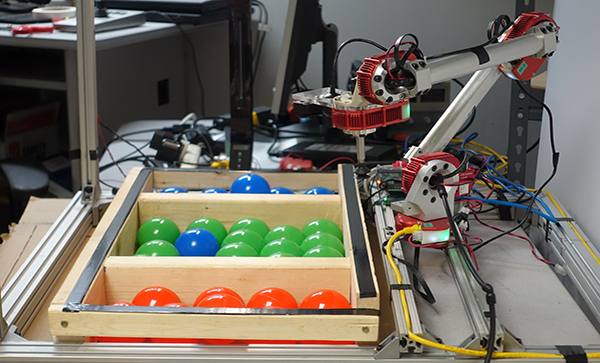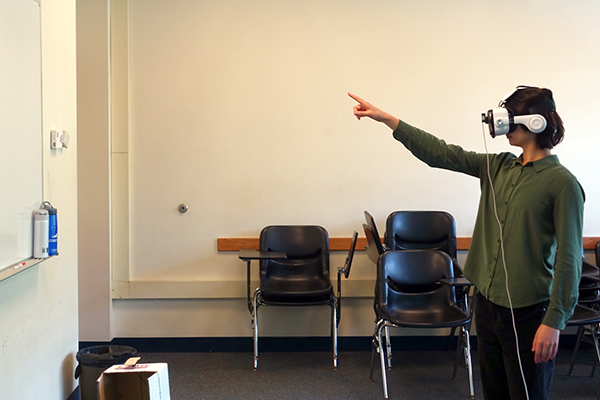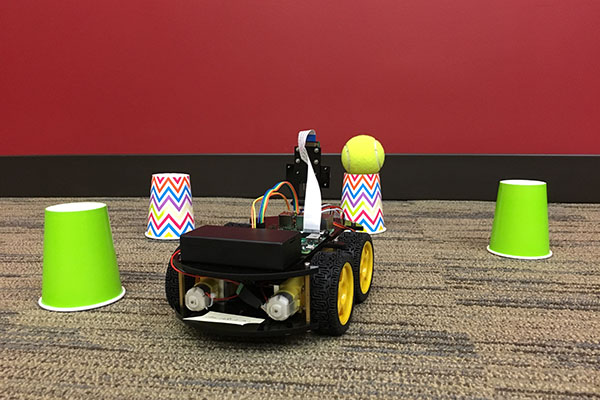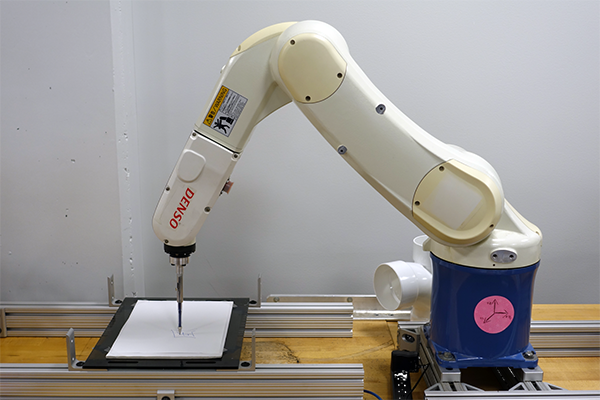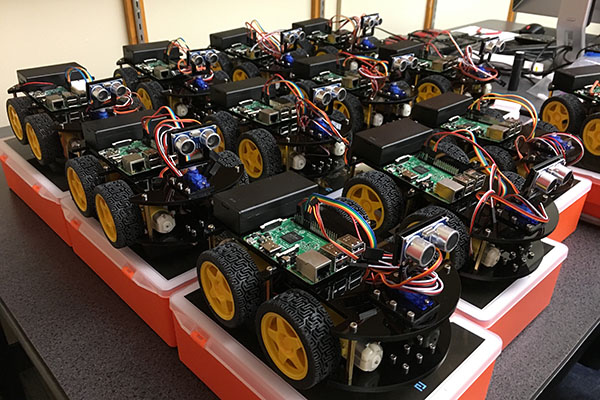Internet of Robotic Things
Mechanical Engineering Professor Kenji Shimada combines robots, self-driving cars, and factory automation in one course for upper level students.
Self-driving cars seem to be the way of the future as the technology develops and they gain popularity. But for mechanical engineers, it opens a whole new realm of possibilities. What happens when you combine traditional mechanical engineering knowledge and the internet of things?
The internet of things (IoT) is the term for everyday objects that now have internet capabilities: think smart watches, Fitbits, and smartphones. For the mechanical engineers who work on mechanical systems—like cars, factory machinery, and other systems—they now need more than just traditional mechanical knowledge. They need to understand how mechanical and cyber systems interact and operate together.
To help mechanical engineering students bridge the gap, Mechanical Engineering Professor Kenji Shimada and his co-instructor, Tomotake Furuhata, debuted their class, “Robotic Systems and IoT” this semester. The course provides graduate students and upper-level undergraduates with an overview of how robotic systems are integrated into a larger framework called the Internet of Robotic Things.
“The purpose of this class is to discuss the big trends in robotic systems and the internet of things and to provide two tangible examples: self-driving cars and factory robots,” said Shimada.
According to Shimada, a robot has three key components: motors, sensors, and a controller or planner. A robot navigates itself. But when it starts talking to a network (like a car communicating with Google maps to receive alerts about traffic patterns) then it becomes part of the internet of things.
The first half of the course provides students with an overview of the robotic systems that are connected to the internet. They learn how to write computer programs to teach a real industrial robot how to pick up and place objects on a turntable using machine vision. They learn about a modern computational framework—the client-server framework—where each component reports its own status to the server and every other component can grab that data and decide its own action, rather than having one central software that controls everything. This lays the groundwork for the second half of the semester: student projects.
Master’s students Sarah Asano, Shun Yao, Peipei Li, and Ashish Bajaj created a virtual reality (VR) game system using a person’s phone and sensors set up in a room for their final project. The sensors capture the person’s movement and hand gestures, then transmits that information to the phone via a website. The student team was able to map the user into a walk-able, virtual world, producing something like a more immersive, controller-less, VR version of a Nintendo Wii game.
This course keeps up with the trend of mixing computer science with physical systems, which is the direction that industry is taking.
Kaveh Nikou, Master's student, Mechanical Engineering, Carnegie Mellon University
“In mechanical engineering the focus is on mechanics, design, thermal systems,” said Kaveh Nikou, another first year master’s student. “This course fills the gap and keeps up with the trend of mixing computer science with physical systems, which is the direction that industry is taking.”
The course gives students a competitive edge when entering the workforce. If they know the trends and can demonstrate skills, they have a better chance of being offered a job at top-notch companies such as Uber, Google, and Amazon, who hire mechanical engineers with skills in the latest information technology.
Shimada predicts that the next things to become automated are homes and hospitals—like having a dishwasher that starts from your smart phone. But what is certain is that mechanical engineers will play an important role in the design and development of these systems.
“I’m taking what I’ve learned from this class back to my company to get more people thinking about robotic systems and the internet of things,” said Alexa Becker, another master’s student who currently works in industry. “It’s a lot of work, but it’s exciting to be on the cutting edge.”

